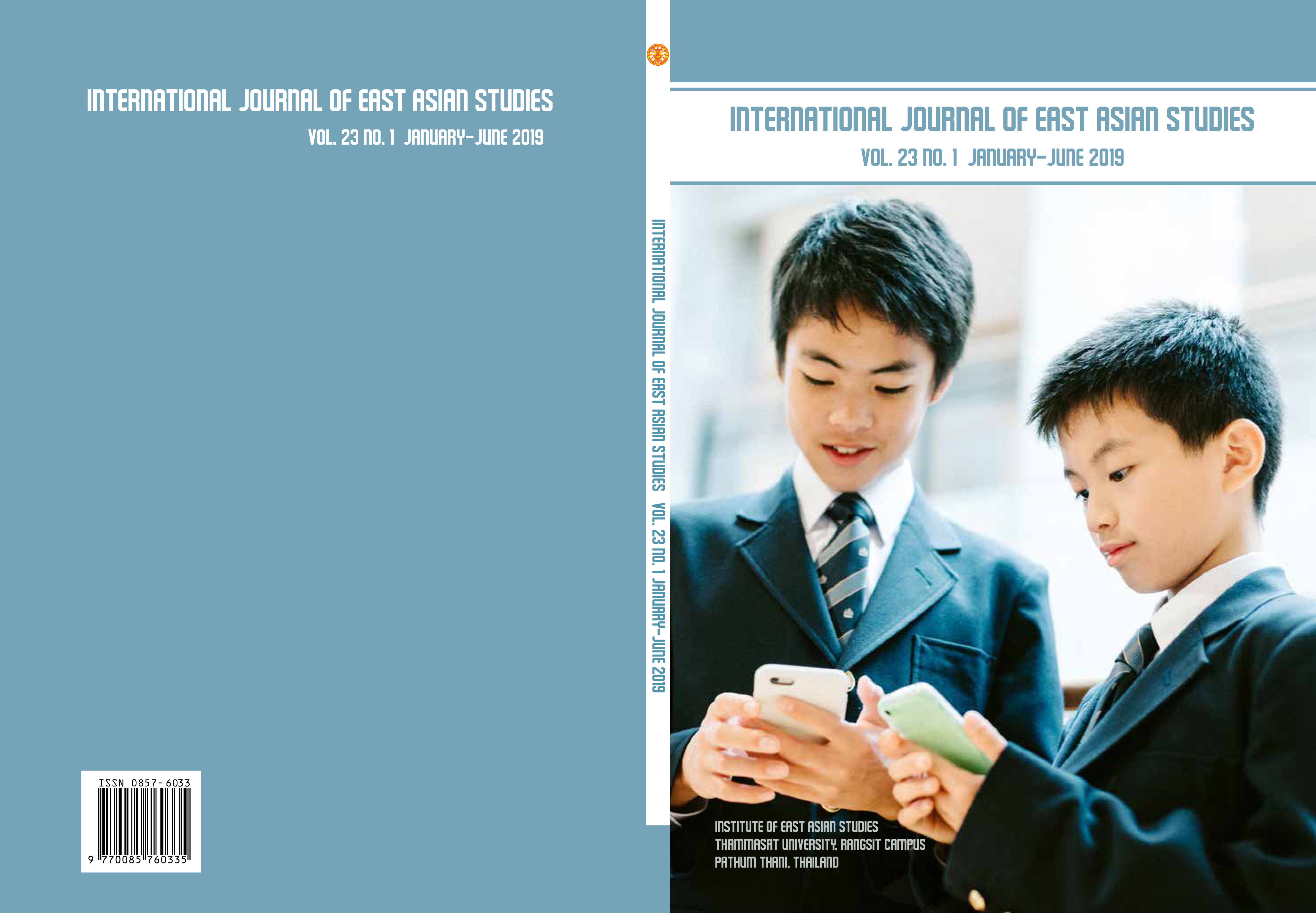The U.S. - China Power Rivalries in the Obama Era: The Limits of American Alliance and the Challenges of (Not) Choosing Sides in Southeast Asia
Keywords:
US foreign policy, Barack Obama, military alliance, Southeast Asia, the rise of ChinaAbstract
This article aims to explain the limits of the American military alliance in Southeast Asia during Barack Obama’s administration, in the context of China's rise. Preoccupied by the mainstream narrative asserting that great power rivalries between the U.S. and China would inevitably force Southeast Asian states to choose sides, this article, however, strongly disagree with such narrative. Rather, it is more likely that even though the Obama administration would attempt to form an alliance network to counterbalance and deter China's influence, the Washington containment coalition was unlikely to gain many supporters in Southeast Asia due mainly to different interests and needs among Southeast Asian states. Moreover, even some states have faced China’s aggressive behavior in the case of the South China Sea disputes, these states have realized that they should maintain its economic and security relations with both China and the U.S. instead of choosing sides, which are considered as a risky business.
Downloads
References
ฑภิพร สุพร. (2557). “ภัยคุกคามจากจีน” ในทัศนะของฟิลิปปินส์: กรณีศึกษาข้อพิพาททะเลจีนใต้ระหว่างจีน-ฟิลิปปินส์และบทบาทของสหรัฐอเมริกา. วารสารสังคมศาสตร์, 44(1), 143-162.
ฑภิพร สุพร. (2560). การปรับดุลทางยุทธศาสตร์ของสหรัฐฯ ต่อเอเชีย: กําเนิด พัฒนาการ และอวสาน? จุลสารความมั่นคงศึกษา, 188.
สุรชาติ บำรุงสุข. (2557). Pivot to Asia: ผลกระทบต่อไทย. จุลสารความมั่นคงศึกษา, 140.
Translated Thai References
Suporn, T. (2014 [2557]). “Phai khukkham chak chin” nai thatsana khong filippin: Korani sueksa khophiphat thale chin tai rawang chin-filippin lae botbat khong saharat amerika. Warasan Sangkhomsat, 44(1), 143-162.
Suporn, T. (2017 [2560]). Kan prap dun thang yutthasat saharat paiyannoi to echia: Kam noet phatthanakan lae awasan?. Chunlasan khwam mankhong sueksa, 188.
Bamrungsuk, S. (2014 [2557]). Pivot to Asia: Phon krathop to thai. Chunlasan khwam mankhong sueksa, 140.
เอกสารภาษาอังกฤษ
Acharya, A. (2014). Constructing A Security Community in Southeast Asia: ASEAN and the Problem of Regional Order. New York: Routledge.
Allison, G. (2017). Destined for War: Can America and China Escape Thucydides's Trap? Boston: Houghton Mifflin Harcourt.
“China’s Military Rise The Dragon’s New Teeth”. (April 7, 2012). The Economist, 22-27.
Evelyn Goh, & Sheldon W. Simon. (2008). China, the United States, and Southeast Asia: Contending Perspectives on Politics, Security, and Economics. London: Routledge.
Friedberg, A. (2011). A Contest for Supremacy: China, America, and the Struggle for Supremacy in Asia. New York: Norton and Norton.
Goh, E. (2005). Meeting the China Challenge: The US in Southeast Asian Regional Security Strategies (Vol. 16). Washington, D.C.: East-West Center Washington.
Goh, E. (2007). Great Powers and Hierarchical Order in Southeast Asia: Analyzing Regional Security Strategies. International Security, 32(3), 113-157.
Goh, E. (2009). Hegemony, Hierarchy, and Order. In W. T. Tow (Ed.), Security Politics in the Asia Pacific: A Regional-Global Nexus? (pp. 101-121). Cambridge: Cambridge University Press.
Ikenberry, G. J., & Tsuchiyama, J. (2002). Between balance of power and community: the future of multilateral security co‐operation in the Asia‐Pacific. International Relations of the Asia-Pacific, 2(1), 69-94.
John J. Mearsheimer. (2005). Better to Be Godzilla than Bambi. Foreign Policy, 146, 47-48.
John J. Mearsheimer. (2014). The Tragedy of Great Power Politics (Updated ed.). New York: W.W. Norton.
Kang, D. C. (2003). Getting Asia wrong: the need for new analytical frameworks. International Security, 27(4), 57-85.
Kang, D. C. (2017). American Grand Strategy and East Asian Security in the Twenty-First Century. Cambridge: Cambridge University Press.
Mearsheimer, J. J. (2014). The Tragedy of Great Power Politics. New York: W.W. Norton.
Novicio, N. M. (2003). The South China Sea Dispute in Philippine Foreign Policy. Singapore: Institute of Defence and Strategic Studies.
Nye, J. S. (2015). Is the American century over? Cambridge: Polity Press.
Raine, S., & Mière, C. L. (2013). Chapter 4: The US in the South China Sea. Adelphi Series, 53(436-437), 151-178.
Rice, C. (2000). Campaign 2000: Promoting the National Interest. Foreign Affairs, 79(1), 45-62.
Richard Bernstein, & Ross H. Munro. (1997). The Coming Conflicts with China. New York: Alfred A. Kropf.
Ross, R. (2012). The Problem With the Pivot Obama's New Asia Policy Is Unnecessary and Counterproductive. Foreign Affairs, 91(5), 48-58.
Severino, R. C. (2014). Preventing Conflict in the South China Sea. In Pavin Chachavalpongpun (Ed.), Entering Uncharted Waters? ASEAN and the South China Sea (pp. 3-14). Singapore: Institute of Southeast Asian Studies.
Shambaugh, D. (2004). China Engages Asia: Reshaping the Regional Order. International Security, 29(3), 64-99.
Siangyen, C. (2018). U.S. Smart Power in Southeast Asia During the Obama Administration: More Hard or Soft Power?. International Journal of East Asia Studies, 22(1), 72-93.
Tellis, A. J. (2014). Balancing Without Containment: An American Strategy for Managing China. Washington, DC: Carnegie Endowment for International Peace.
Thayer, B. A., & Ibryamova, N. V. (2010). Debates in International Relations. New York Longman.
The George Washington University. (1992). February 18, 1992 draft Defense Planning Guidance. Retrieved from https://www2.gwu.edu/~nsarchiv/nukevault/ebb245/doc03_extract_nytedit.pdf
U.S. Department of Defense. (1997). Quadrennial Defense Review Report, February 6, 2006. Retrieved from https://www.defense.gov/pubs/pdfs/QDR20060203.pdf
Wain, B. (2014). The U.S. Position in the South China Sea. In Pavin Chachavalpongpun (Ed.), Entering Uncharted Waters? ASEAN and the South China Sea (pp. 247-261). Singapore: Institute of Southeast Asian Studies.
Weatherbee, D. E. (2007). Political Change in Southeast Asia: Challenges for US Strategy. In A. J. Tellis & M. Wills (Eds.), Strategic Asia 2007–08: Domestic Political Change and Grand Strategy (pp. 234-265). Washington, D.C.: National Bureau of Asian Research.
Xuetong, Y. (2013). Strategic Cooperation without Mutual Trust: A Path Forward for China and the United States. Asia Policy, 15 (1), 4-6.



